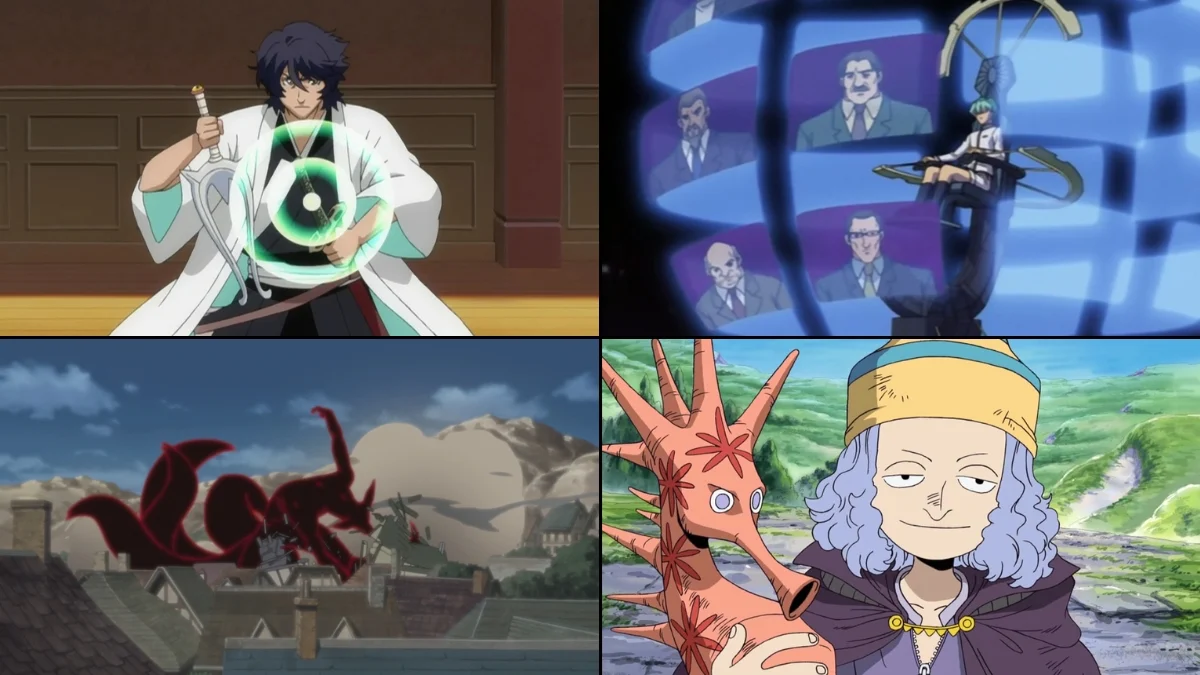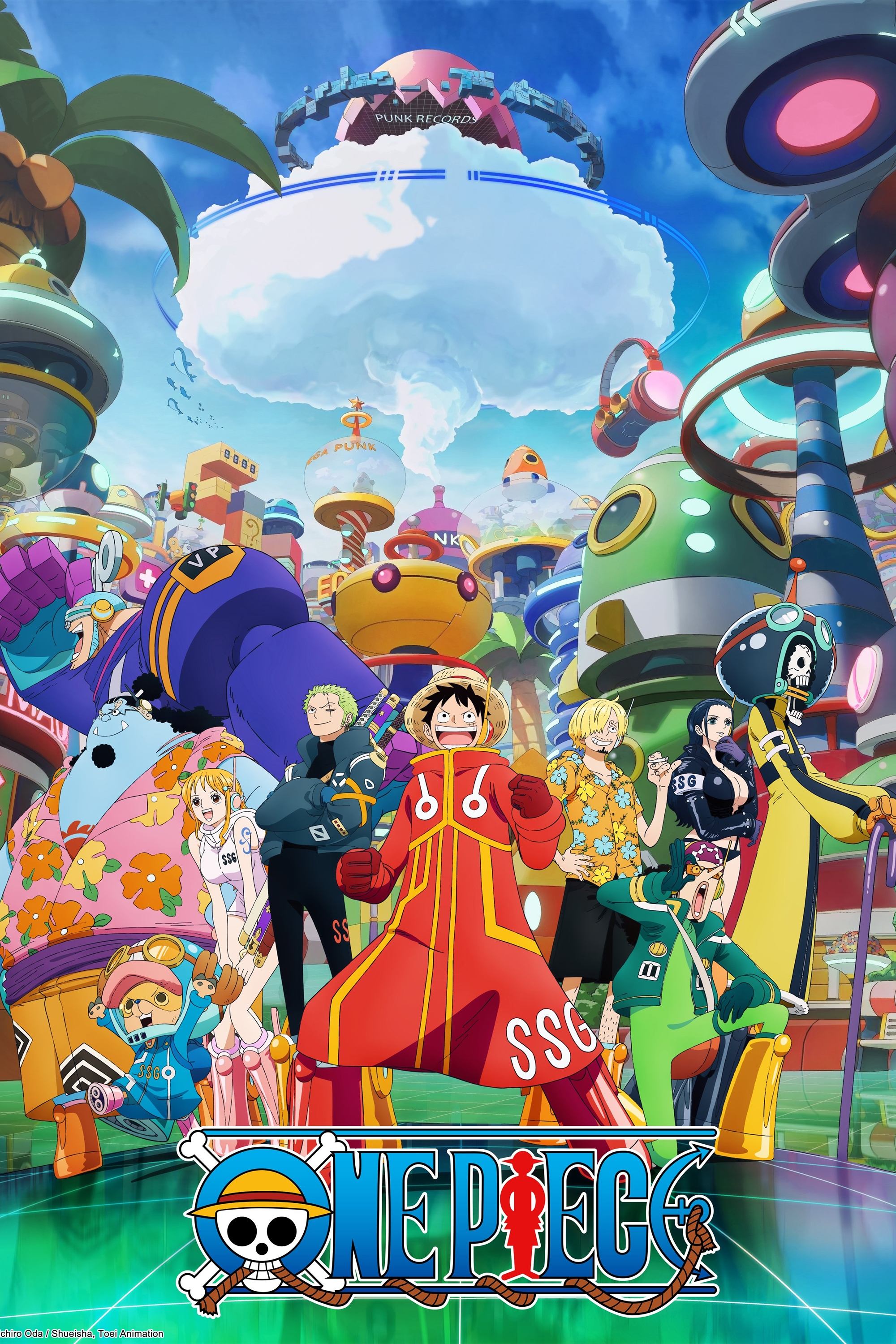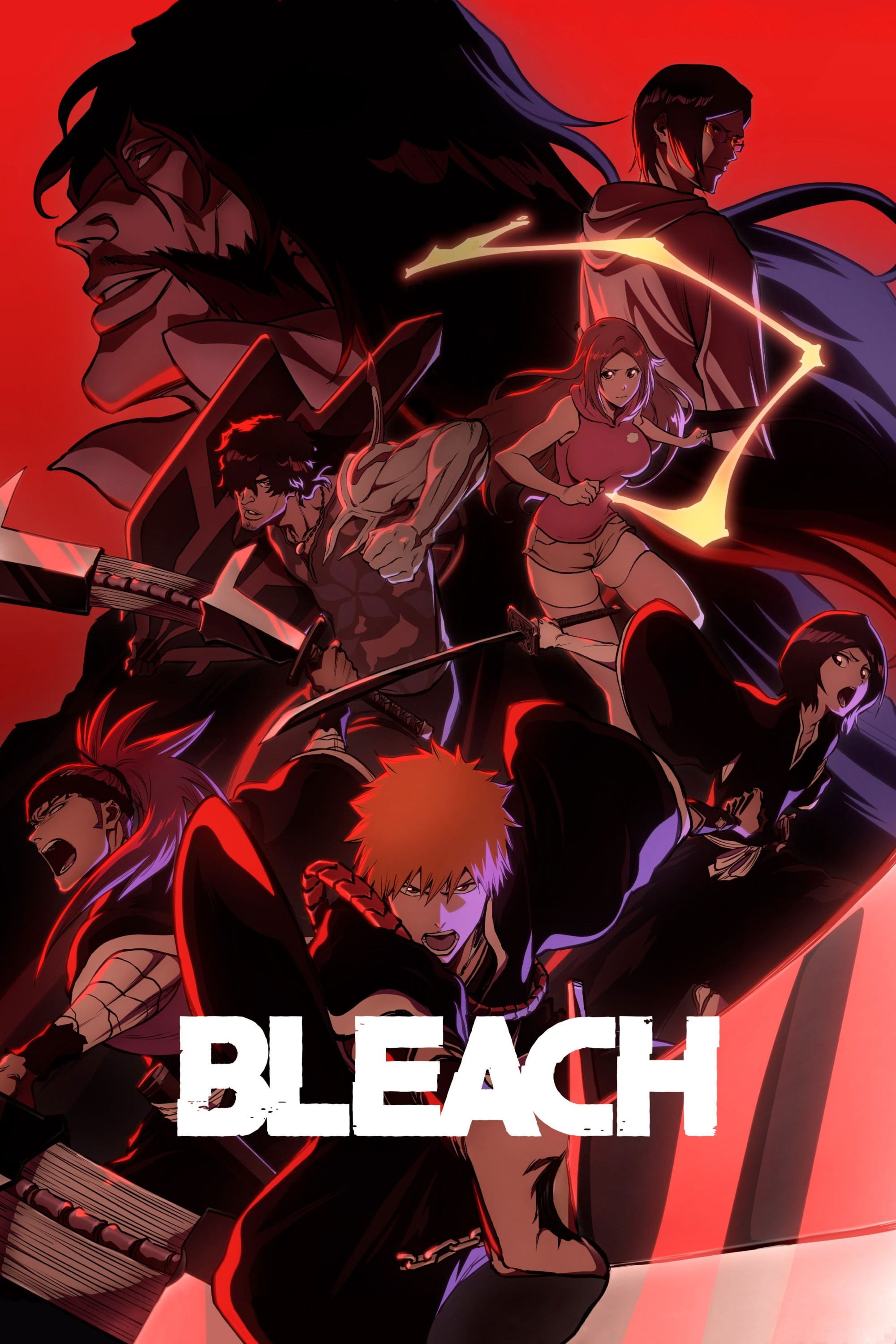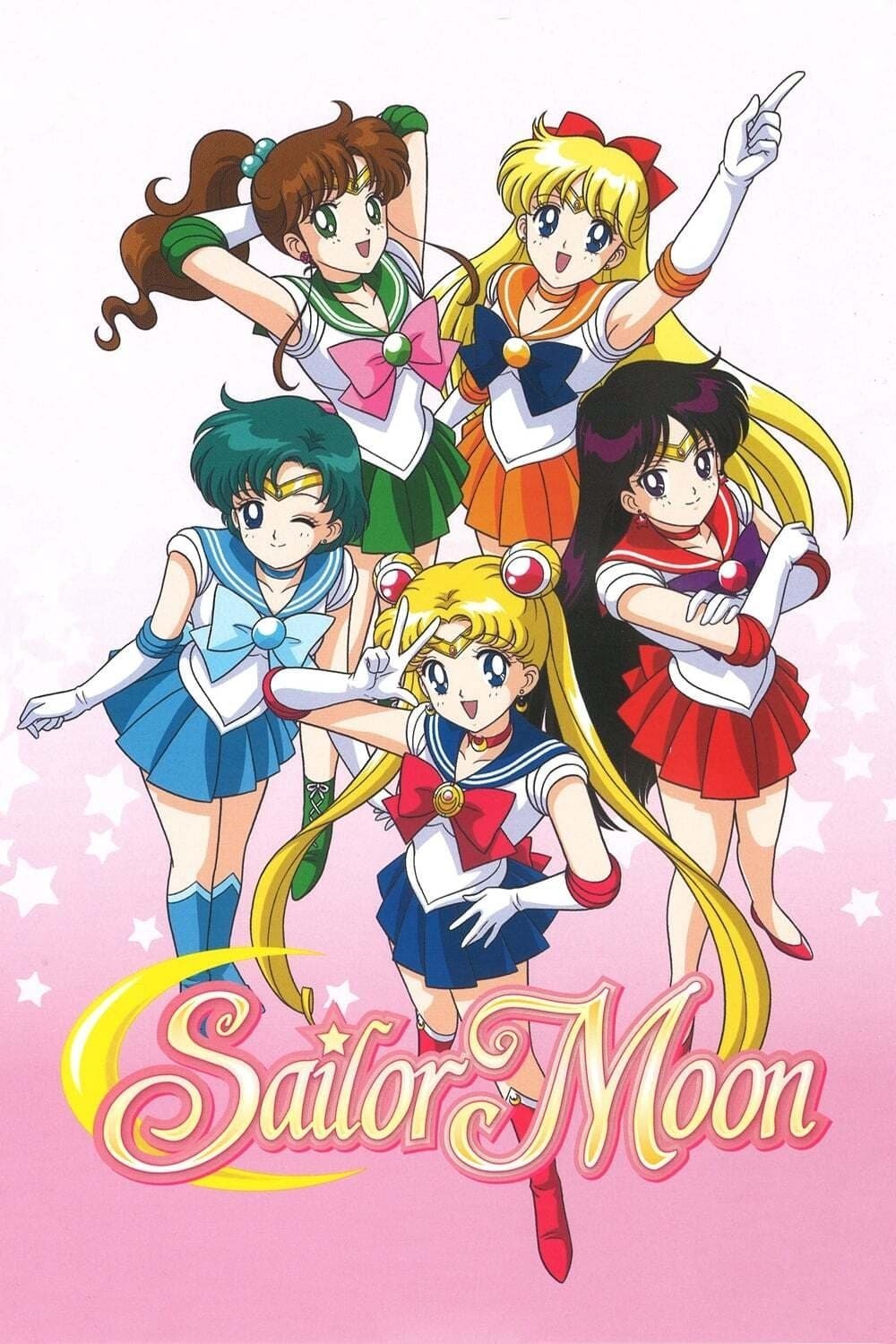
Anime ‘filler’ isn’t always pointless—many original storylines enrich the world, develop supporting characters, or cleverly incorporate content from related games. Here are twenty self-contained arcs that fit well into their respective series without feeling like a waste of time. We’ve included how many episodes they cover, what they’re about, and interesting production facts to help you find exactly what you’re looking for.
‘One Piece’ (1999) – G-8 Arc

Following the events in Skypiea, this story arc (episodes 196-206) traps the Straw Hat crew inside a powerful Marine base. It features Commander Jonathan and the base’s complex defenses, focusing more on sneaking around and quick thinking than direct battles. The animators created detailed designs for areas like kitchens and docks to make the base feel realistic and inhabited. This arc is a standalone adventure that concludes with everything returning to normal for the crew, making it a good story to watch independently.
‘Bleach’ (2004) – Zanpakutō Unknown Tales Arc

This story arc, spanning episodes 230 to 265, features the spirits of the characters’ swords taking on lives of their own. A new character named Muramasa causes trouble by cutting off the connection between Shinigami and their swords, leading to interesting battles. The arc adds depth to the world’s lore with brand new sword designs and powers created specifically for the anime. Importantly, it doesn’t change the main story from the original manga, and fits neatly within the existing storyline.
‘Naruto Shippūden’ (2007) – Power (Chikara) Arc

Okay, so this special – episodes 290 through 295 – felt like a really cool, self-contained movie arc. They clearly put some extra effort into it with noticeably better animation and storyboarding that felt cinematic. The story kicks off with a strange, powerful relic and follows a team sent to investigate a village that’s been completely wrecked. What I liked is they introduced some new characters and kept the plot focused, making it feel like a tight, complete story even though it was broken up into episodes. Best of all, it didn’t mess with the main ongoing plot at all – you can jump right in without needing to know everything that came before.
‘Dragon Ball Z’ (1989) – Garlic Jr. Saga

This story arc, covering episodes 108 to 117, revisits a villain from the movie ‘Dead Zone’ – Garlic Jr. – and connects the events of the films to the ongoing series. The plot revolves around a mysterious Black Water Mist that makes everyone on Earth aggressive, and it puts the spotlight on Kami and Mr. Popo while the Z Fighters deal with the threat. It’s a self-contained story that bridges larger events, offering a quick crisis and satisfying conclusion without changing how strong the characters are.
‘Naruto’ (2002) – Land of Tea Escort Mission

In episodes 102 to 106, Team 7 protects a client during a long-distance race that’s caught up in local politics. This mission introduces a new character, Idate Morino, who has connections to people back in the Leaf Village through his family. The storyline focuses on challenges presented by the race’s difficult terrain and features opponents who use realistic, combat-focused ninja techniques. Ultimately, the team completes the mission and returns to the village, maintaining a consistent storyline.
‘Bleach’ (2004) – The New Captain Shūsuke Amagai Arc

Episodes 168 through 189 introduce a new captain created for the anime, specifically for the 3rd Division, and delve into the illicit weapons dealings of the Kasumiōji clan. This storyline features a unique power system called ‘bakkōtō’ developed by the show’s creators. Unlike many arcs focused on battling Hollows, this one centers on the political landscape within the Seireitei and investigations conducted by the captains. Ultimately, the arc concludes by rebuilding the 3rd Division’s team while staying true to the established leadership structure.
‘Naruto Shippūden’ (2007) – Three-Tails’ Appearance

This story arc, spanning episodes 89 to 112, focuses on the powerful Three-Tails beast, Isobu, and introduces Guren, a character created specifically for the anime who uses a unique Crystal Release ability. The plot revolves around several groups – including Akatsuki and teams from the Hidden Leaf Village – trying to capture the beast. It offers a detailed look at how different organizations handle individuals with tailed beasts inside them, all while telling a story separate from the main manga storyline. Ultimately, the arc sets up the Three-Tails’ fate to match what happens later in the official canon.
‘One Piece’ (1999) – Ocean’s Dream Arc

This story arc, episodes 220-224, is inspired by the PlayStation 2 game ‘Ocean’s Dream!’ It begins with the crew of the Going Merry suffering from amnesia, which leads to unique character pairings and challenges they must overcome together. The story takes ideas from the game and adapts them for television, focusing on a series of episodes. Ultimately, everyone regains their memories, and the voyage continues as normal.
‘Sailor Moon’ (1992) – Makaiju (Doom Tree) Arc

The first twelve episodes of ‘Sailor Moon R’ (47-59) begin with the arrival of Ail and An, who come to Earth to nurture the Doom Tree. This story arc refreshes the Sailor Guardians’ powers and appearances with new transformations and music. It serves as a self-contained story, resolving a major conflict and setting the stage for the next part of the series. As a result, the characters are ready to begin a new storyline with established relationships.
‘Yu-Gi-Oh! Duel Monsters’ (2000) – Virtual World (Noah) Arc

During episodes 98 to 121 of the Battle City storyline, Noah Kaiba traps the heroes inside a virtual world. The Big Five reappear, challenging them to duels with swapped decks and unusual rules that showcase different card strategies. These duels take place in imaginative, computer-generated environments. The arc concludes with everyone returning to the main tournament, and the official tournament results remain unchanged.
‘Bleach’ (2004) – The Bount Arc

Episodes 64 through 109 feature the Bount, a new race created for the anime who gain life by consuming souls. The story shifts from Karakura Town back to Soul Society, giving more focus to familiar human characters. The Bount were designed with unique powers and partners to set them apart from the Hollows and Arrancar. Ultimately, the storyline wraps up, returning the focus to the main, established story arcs.
‘Naruto’ (2002) – Star Guard Mission

This story arc, episodes 178 through 183, sends Team Guy and friends to the Hidden Star Village, Hoshigakure. They discover a meteorite that boosts chakra, but with a dangerous side effect. The arc explores how Hoshigakure trains its ninja and where their unique “star” abilities come from. It also gives us a look into the lives of smaller villages and how they manage to survive outside the control of the larger nations. Ultimately, the story resolves the danger posed by the meteorite and shifts the focus back to missions in the Leaf Village.
‘Fairy Tail’ (2009) – Key of the Starry Sky

Episodes 125 to 150 focus on several groups working together to find the pieces of a magical clock. This storyline brings back a group connected to previous villains and sends teams on missions to different areas. The creators introduced new characters and settings to highlight a variety of magical abilities. The story concludes with the clock being activated and the consequences explored, before the series returns to following the original manga’s plot.
‘Rurouni Kenshin’ (1996) – The Legend of the Feng Shui Masters

This story arc, unique to the anime and spanning episodes 65-70, centers on a disagreement over feng shui in modern Tokyo, involving a father and daughter. It blends this conflict with the city’s ongoing development and introduces a new fighting style based on manipulating energy, different from the series’ main sword technique. To create an authentic feel for the historical setting, the animators designed new props and maps. Importantly, this storyline doesn’t affect the main plotlines focused on Kyoto or the characters’ quest for revenge.
‘Inuyasha’ (2000) – The Panther Devas

Episodes 75 through 79 focus on a storyline involving the return of the Panther Tribe, a group of supernatural creatures previously mentioned in the series. This event brings together normally opposing factions who must work together to rescue their captured friends. The anime creators also introduced unique weapons and ceremonies specific to this tribe. Ultimately, the tribe is sealed away, and the main quest to collect shards continues as usual.
‘One Piece’ (1999) – Ice Hunter / Accino Family Arc

Following the events at Enies Lobby, episodes 326 through 335 feature the Straw Hat crew facing off against bounty hunters in a frozen, icy environment. The animators created detailed winter scenes and exciting ship chases on the ice. This story arc, unique to the anime, revolves around stolen pirate flags and the importance of a pirate’s reputation. Ultimately, the crew leaves with their identities and planned course secured.
‘Naruto Shippūden’ (2007) – Six-Tails Unleashed

I was really captivated by episodes 144 through 151! They introduced Utakata, who carries the power of the Six-Tails, and his student, Hotaru, and their story was linked to a really intriguing, but dangerous, technique. Beyond that, the arc delved into the complicated politics happening behind the scenes in the ninja villages, especially concerning secret weapon scrolls and the threat of rogue ninjas. We got to see teams from the Leaf Village actively on missions, while the looming presence of Akatsuki was always felt in the background. And it’s great knowing that everything that happens ultimately sets up what we see later on with the tailed beasts – it all fits together so well!
‘Black Clover’ (2017) – Devil Banishers Arc

In episodes 142 through 148, a group of rebels begins attacking the Magic Knights following the kingdom’s recent troubles. The story involves a series of planned kidnappings and growing public distrust of important figures. This arc, created specifically for the anime, explores the challenges of rebuilding after war and restoring faith in the government. Ultimately, the main characters’ roles and team dynamics remain the same.
‘Boruto: Naruto Next Generations’ (2017) – Mitsuki’s Disappearance Arc

From episodes 71 to 92, Mitsuki runs away, prompting a chase that leads all the way to the Stone Village. This storyline introduces the Fabrications – essentially artificial beings created using advanced ninja technology. It also explores the history of artificial life and the rules surrounding scientific research in the five major ninja nations. Ultimately, the mystery is solved and the team is reunited, without impacting the overall story arc.
‘Bleach’ (2004) – Gotei 13 Invading Army Arc

Episodes 317 to 342 focus on the battle between the Gotei 13 and Reigai – artificial bodies created using advanced technology called Mod-Soul, and controlled by Kagerōza Inaba. This storyline features fights where captains face off against copies of themselves, and raises questions about the morality of creating artificial souls. To save time and resources, the animators cleverly reused and altered existing fight scenes to show characters with mirrored powers. Ultimately, Soul Society’s leaders regain control, and the dangerous technology is secured.
Share your picks for filler arcs that surprised you—in a good way—in the comments!
Read More
- Robert Kirkman Launching Transformers, G.I. Joe Animated Universe With Adult ‘Energon’ Series
- Avantor’s Chairman Buys $1M Stake: A Dividend Hunter’s Dilemma?
- NextEra Energy: Powering Portfolios, Defying Odds
- AI Stock Insights: A Cautionary Tale of Investment in Uncertain Times
- Hedge Fund Magnate Bets on Future Giants While Insuring Against Semiconductor Woes
- EUR TRY PREDICTION
- Ex-Employee Mines Crypto Like a Digital Leprechaun! 😂💻💸
- UnitedHealth’s Fall: A Seasoned Investor’s Lament
- The Illusion of Zoom’s Ascent
- Oklo’s Stock Surge: A Skeptic’s Guide to Nuclear Hype
2025-11-10 16:51